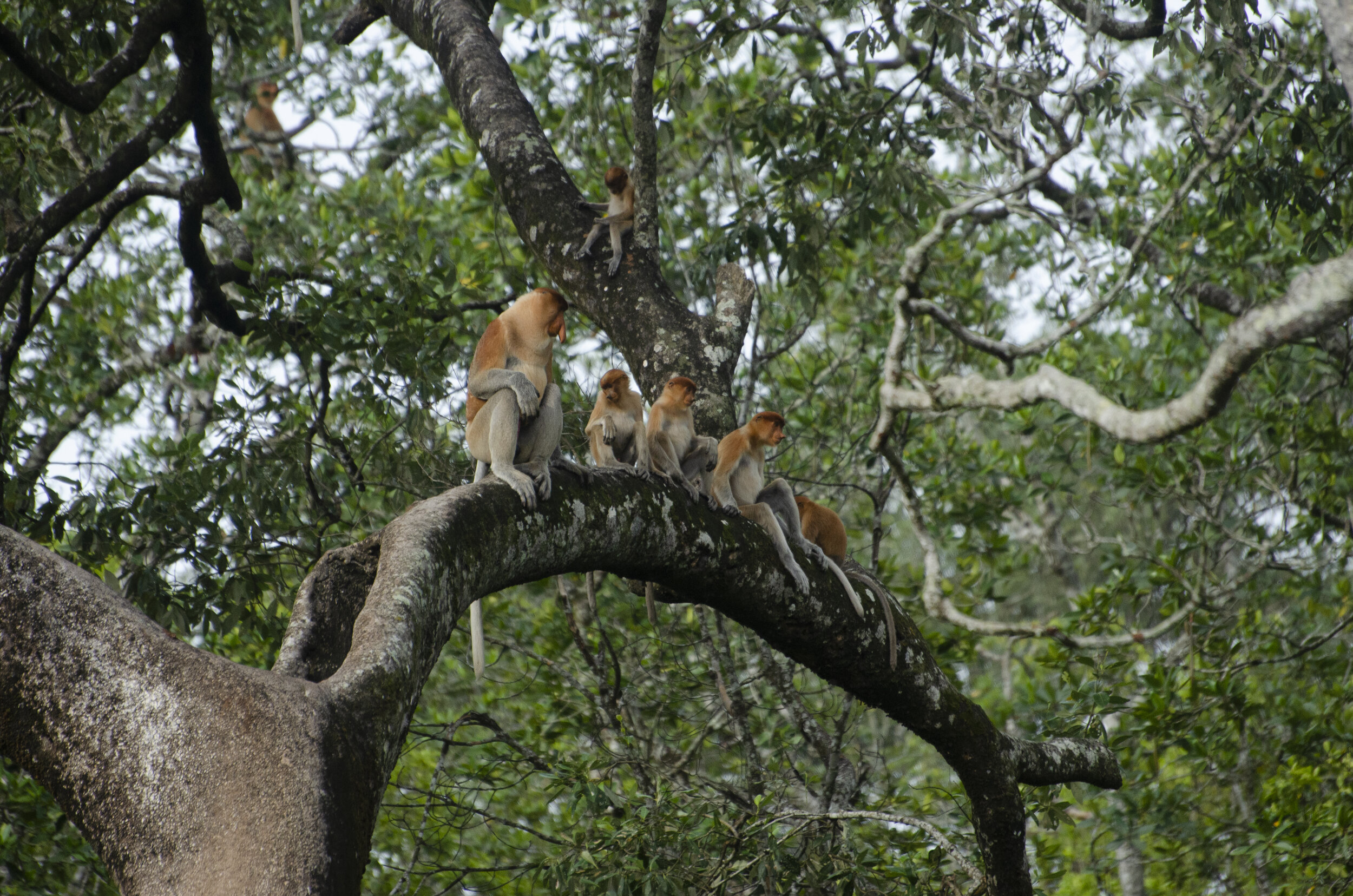
Found only in the mangroves of Borneo, learn the language of the proboscis monkeys and discover their stories within the forest.
THE BIGGEST NOSE IN BORNEO
Not your average day monkey
Appearances
The proboscis monkey has a very distinct appearance. With big noses, pot bellies, and webbed toes, these monkeys may not win any beauty pageants, but they have a charisma of their own.
Having webbed toes make them capable of swimming long distances when under threat. However, the well protected proboscis monkeys in Labuk Bay are accustomed to a comfortable lifestyle, and do not find the need to cross rivers to escape from predators or to find new food.
Among the largest of Asia’s monkeys, male specimens can reach 23 kgs (50 pounds), and adult females can grow up to half that size. Male proboscis monkeys will develop a huge pendulous nose as they sexually mature, with the biggest nose of all taking on the role of alpha male.
Adult proboscis monkeys possess a very distinctive coat of light brown fur that turns red around the head and shoulders, and grey around at the arms and legs. The fur around the pelvic region and tail is white. Basically, they wear tighty-whities.
Habitat and Social Structure
Found only in the coastal forests of Borneo, these monkeys are listed as Endangered on the Red List of threatened species, and are also a Totally Protected species in Sabah. Despite this level of legal protection, population studies conducted in 2008 revealed that the proboscis monkey population has declined by more than 50% over the past 40 years, and their continued existence is currently being threatened primarily by habitat loss and fragmentation.
Proboscis monkeys generally lives in groups composed of one alpha male, several adult females and their offsprings. When male offsprings mature (~18 months), they leave their family and join an all-male group for protection and companionship. Females also leave their natal groups perhaps to avoid inbreeding and reduce competition for food. Throughout their lives, such moves may happen several times.
Diet
Peaceful and non-territorial, proboscis monkeys avoid competing for food resources with other primates such as long-tailed macaques and Orang Utans by feeding on nutritionally poor food such as young leaves, unripe fruit and seeds. Their huge chambered stomachs host an array of probiotics that help them detoxify defensive plant chemicals and digest cellulose. They also possess the ability to regurgitate food and chew on it again, a behavior that is unique among primates.
Life in Labuk Bay
The proboscis monkeys in Labuk Bay enjoy a supplementary diet of pancakes alongside their natural diet. They can be seen in the trees near platforms A and B near mealtime and will even walk right up to tourists.
MORE INFORMATION
AN UNUSUAL DIET
The proboscis monkeys in Labuk Bay have a supplementary food intake of pancakes!
MEALTIMES
Platform A and B have different feeding times as well as different families of monkeys.
CLASH OF ALPHAS
With constant battles for mating rights, life is never boring in the mangroves.


















